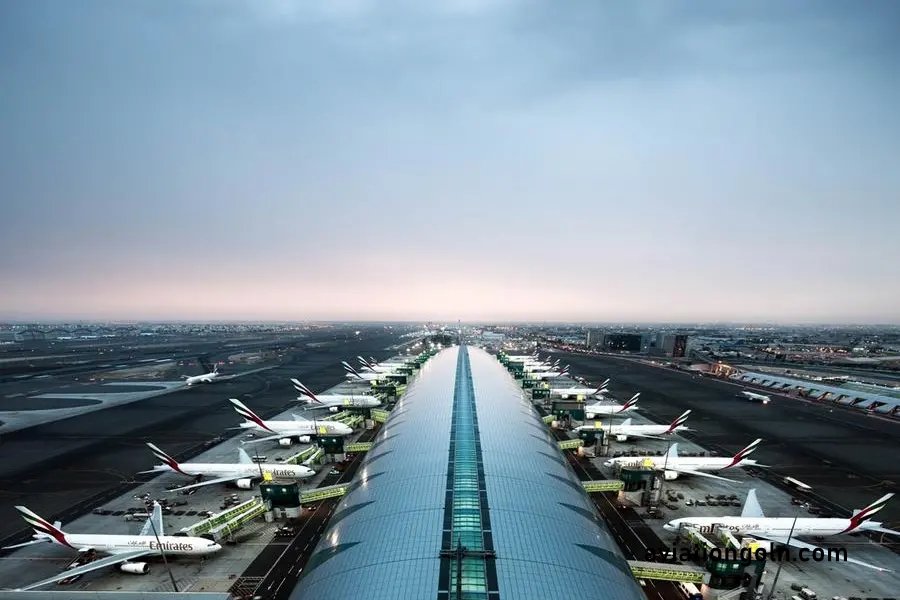Talent Acquisition and Management for Airports: The aviation industry is an intricate and multifaceted ecosystem. At its core lies the airport, a central hub that facilitates the transportation of millions of people and goods every year. The heart of this dynamic structure is its workforce – the men and women who manage, operate, and maintain the facilities, systems, and services that make air travel possible.
With rising passenger numbers and technological advancements, it’s paramount for airports to keep pace. They can only achieve this by attracting, hiring, and retaining the right talent. In this context, talent acquisition and management for airports become a crucial strategic initiative.
Talent Acquisition and Management for Airports: Strategic Planning for Human Resources
Understanding the Unique Challenges of the Airport Environment
Before delving into the strategies for talent acquisition and management, it’s essential to understand the unique challenges the airport environment poses:
- Diverse Skill Sets Required: An airport requires a multitude of professionals ranging from air traffic controllers, security personnel, baggage handlers, customer service representatives, to IT experts, managers, and more.
- 24/7 Operations: Most international airports function round the clock. This demands shifts, robust scheduling, and flexibility from the workforce.
- Safety and Security: The aviation sector has stringent safety and security norms. Compliance to these standards is crucial, making it imperative to have a workforce trained in these protocols.
- Rapid Technological Changes: From biometrics to AI-based systems, technology is revolutionizing airports. The workforce needs to adapt swiftly to these changes.

Strategic Planning for Talent Acquisition
To meet these challenges, airports must develop a comprehensive strategy for talent acquisition:
- Employer Branding: To attract top talent, airports need to position themselves as employers of choice. This involves showcasing growth opportunities, world-class training, and competitive compensation.
- Collaboration with Educational Institutions: By partnering with universities and vocational training centers, airports can ensure a steady inflow of trained professionals. This also enables customized curriculum developments that cater to the industry’s evolving needs.
- Utilizing Technology: AI-driven recruitment platforms can help in sorting and shortlisting candidates, ensuring that only the best are selected. Similarly, virtual reality (VR) can be used for realistic job previews.
- Diverse Hiring: A diverse workforce brings different perspectives, enhancing problem-solving and innovation. Airports should aim for diversity in age, gender, ethnicity, and background.
- Internships and Apprenticeships: Offering internships and apprenticeships can be a way to groom potential future employees, familiarizing them with the airport environment from an early stage.

Strategic Planning for Talent Management
Once the talent is onboard, retaining and developing them becomes vital:
- Orientation and Onboarding: A structured onboarding process ensures that new hires acclimate quickly. Introducing them to the airport’s culture, operations, and safety protocols from day one is crucial.
- Continuous Training and Development: Given the fast-evolving airport environment, continuous training becomes essential. Whether it’s new security protocols or a new IT system, employees should be up-to-date.
- Performance Management: Regular performance reviews help in recognizing the top performers and identifying areas of improvement. Constructive feedback and goal setting are essential components.
- Career Development: Employees are more likely to stay if they see a clear career path. Mentorship programs, cross-functional training, and leadership development initiatives can help in this regard.

- Employee Engagement: Engaged employees are more productive and less likely to leave. Regular surveys, open communication channels, and team-building activities can boost engagement.
- Compensation and Benefits: Competitive pay, health benefits, and other perks play a significant role in retaining talent. Regular benchmarking against industry standards ensures that the airport remains an attractive employer.
- Flexibility: Given the 24/7 nature of airport operations, offering flexibility, such as flexible shifts or remote work (where feasible), can enhance employee satisfaction.
- Succession Planning: Identifying and grooming potential leaders ensures that the airport is never left with a leadership vacuum. This involves continuous assessment, training, and feedback.

Case Study: Changi Airport, Singapore
Changi Airport in Singapore is consistently ranked as one of the best airports globally. One of the reasons for its success is its focus on human resources. Here’s how Changi Airport excels in talent acquisition and management:
- Employer Branding: Changi Airport is known for its employee-centric approach, ensuring a positive work environment, growth opportunities, and competitive compensation.
- Collaboration with Educational Institutions: Changi Airport regularly collaborates with educational institutions, ensuring a steady flow of trained talent.
- Embracing Technology: From recruitment to training, Changi Airport leverages technology to ensure efficiency and effectiveness.
- Focus on Employee Development: Continuous training, regular feedback, and clear career paths are a norm at Changi Airport, ensuring that its employees are among the best trained in the industry.

In conclusion, as airports worldwide gear up for a new era of growth and challenges, strategic human resource planning becomes paramount. By focusing on talent acquisition and management, airports can ensure that they not only keep pace with the changes but also lead the way in innovation and excellence. It’s essential to remember that behind every successful flight, smooth security check, and happy passenger, there’s a dedicated team of professionals making it all possible. Investing in this team is the best way forward for any airport aiming for success in the modern aviation landscape.
